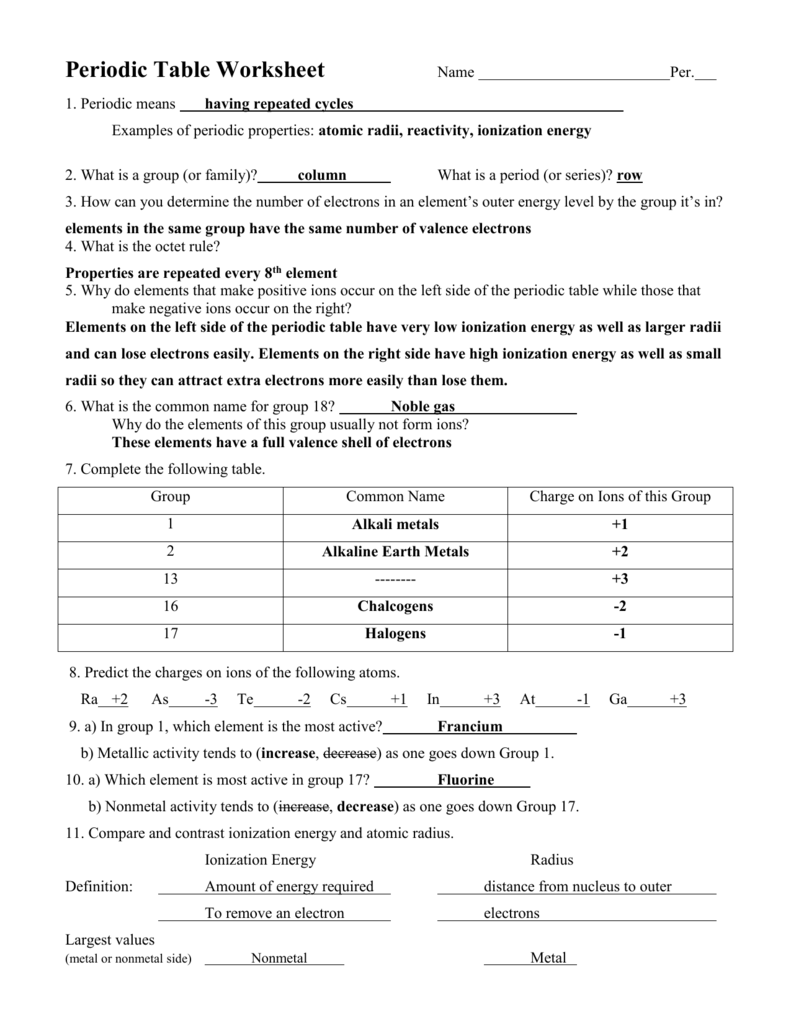

PhET Build an Atom Interactive Activity View Worksheet
PERIODIC TABLE CHEMISTRY WORKSHEET HOW TO
Students will learn about protons, neutrons, and electrons, and how to determine the number of each based on an element's atomic mass and atomic number.Įssential Concepts: Periodic table, protons, neutrons, electrons, atomic mass, atomic number. Purpose: This is a worksheet that introduces the relationship between an element's position on the periodic table and its atomic structure. These are helpful to use if you have students who struggle with effective note-taking and either write nothing down at all or try to write everything (and fail to listen to actual lecture).Ītomic Structure and the Periodic Table View Worksheet

Purpose: This is a fillable notes outline to accompany the atoms and the periodic table Powerpoint. Students then learn about the layout and organization of the periodic table before ending with ions, isotopes, and average atomic mass.Įssential Concepts: Atoms, periodic table, protons, neutrons, electrons, average atomic mass, atomic number, ions, isotopes.Ītoms and the Periodic Table Student Notes Outline View Worksheet Purpose: This Powerpoint lecture starts with a history of how atoms were discovered, from Democritus through Dalton, JJ Thomson, Rutherford, and Bohr. Students will also learn about ions and isotopes, as well as the meaning behind average atomic mass.Ītoms and the Periodic Table Powerpoint Lecture View Worksheet This unit also includes the history of how the atom was discovered, including the famous gold foil experiment, Bohr models, and atomic spectra. Students learn the history of the periodic table, how to read it, and what the major periodic trends are. This unit finally introduces the structure of an atom, including the importance of protons, electrons, and neutrons.


 0 kommentar(er)
0 kommentar(er)
